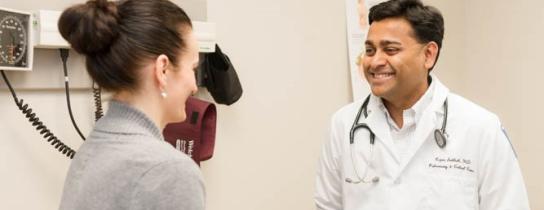
Lung Matters - A Four Part Series - Part Four
Lung Matters
Things to ponder as you spring forward….
Allergies
Pollen is one of the most common triggers of seasonal allergies. The three common types of pollen that cause allergies are ragweed, grass, and tree pollen.
Pollen can cause allergies and asthma symptoms (i.e. hay fever) or allergic rhinitis. In fact, 40 to 60 million Americans suffer from allergic rhinitis each year.
For those nature lovers and garden warriors, there are allergy-friendly trees to keep in mind when you are outdoors, including ash, red maple, yellow poplar, dogwood, magnolia, fir, spruce, double flowering / Kwanzan cherry and plum.
Lung Cancer Screening – Where are we in 2018?
Lung cancer is the 3rd most common type of cancer and is the leading cause of cancer death in the United States.
85% of lung cancers are associated with smoking.
USPSTF (United States Preventive Services Task Force) made recommendations for lung Cancer screening in 2013 that currently serve as best practice guidelines.
Persons between 55 and 80 years of age who have smoked for more than 30 pack-years (smoking 1 pack per day for 1 year constitutes 1 pack year) and currently smoke; or have quit smoking within the past 15 years, should be considered for lung cancer screening using a low dose CT scan (LDCT). Other individuals considered for screening are those who have smoked more than 20 pack-years and have additional risk factors for lung cancer, such as a family history of lung cancer in a first degree relative, specific occupational exposures, radon exposure, or a history of pulmonary fibrosis or COPD.
Downsides of screening for lung cancer include:
- False positive tests (findings of spots or nodules that actually do not turn out to be cancer and can result in unnecessary tests, biopsies and surgeries).
- Over diagnosis (findings of small cancerous nodules and slow growing cancers that result in surgery and treatment that may not have caused any problems otherwise).
- Radiation exposure from too frequent LDCT that can increase cancer risk.
Lung cancer screening is discontinued once one turns 81 years old, has not smoked for 15 years or more, or has a serious condition which makes it not feasible or appropriate to have curative lung surgery should a cancer be discovered through screening.
What went wrong this flu season?
- Heavy burden of flu activity - more than 200,000 positive specimens were reported from October 2017 to March 2018. 70% of isolates were influenza type A and 30% were influenza type B. H3N2 was the dominant strain of influenza type A and is more vaccine hardy and virulent. H1N1 was less common this season.
- Unfortunately, Vaccine Effectiveness (VE) was estimated by the CDC to be only 36% when peak flu incidence was noted particularly in many northern states and California.
- The late peak of flu incidence when vaccine efficacy has started to wane, especially for subjects vaccinated early in the season, contributes to the increased incidence and severity of reported cases.
- Although oseltamivir (Tamiflu, the first-line medication to treat influenza) resistance is quite low, supplies could not match demand during peak flu activity in states like California, which were hit badly and patients had to be treated in makeshift tents due to ERs being overrun by cases.
A wish list for next flu season would include a more effective recombinant quadrivalent flu vaccine, higher vaccination rates that will create and enhance herd immunity, a more robust supply of oseltamivir, and better allocation of health care resources to needier and at risk segments of the population.
Starting an Exercise Regimen – what now?
When it comes down to lung health, is it better to walk, run or bike? The advantages of walking are its low impact and stress on joints, it can be done with a partner, and can be a relaxing past time.
However, when it comes to serious exercise, running and biking help achieve better aerobic fitness and lung health.
Running is a high impact, full body exercise and burns more calories for the same intensity of exercise when compared to biking. Biking is low impact, easier on joints especially for an older trainee, but carries higher risk of fall and accidents and burns fewer calories. Further, the diaphragm is in a cramped position in an aggressive riding position employed by elite athletes and can be uncomfortable if one has lung disease.
My advice is a 3 step approach:
- Start by brisk walking, gradually increasing speed and distance (or time spent.)
- Next, move on to riding a comfortable bike like a cruiser, hybrid or a mountain bike and gradually build core strength and stamina.
- Finally, take on running when your overall fitness level has peaked OR you can stick with biking and advance to road bikes and difficult terrain if that is your preference.
Like the saying goes, no matter how long the winter, spring is sure to follow…
So get up, go out and enjoy the outdoors as the natural world blossoms!!
Rajan Sadagopal K. Subbiah MD, is a Pulmonary and Critical Care Medicine Specialist and sees patients in Crystal Run's Newburgh and Rock Hill offices.

 Optum Radiology at Crystal Run Healthcare
Optum Radiology at Crystal Run Healthcare Request medical records online
Request medical records online